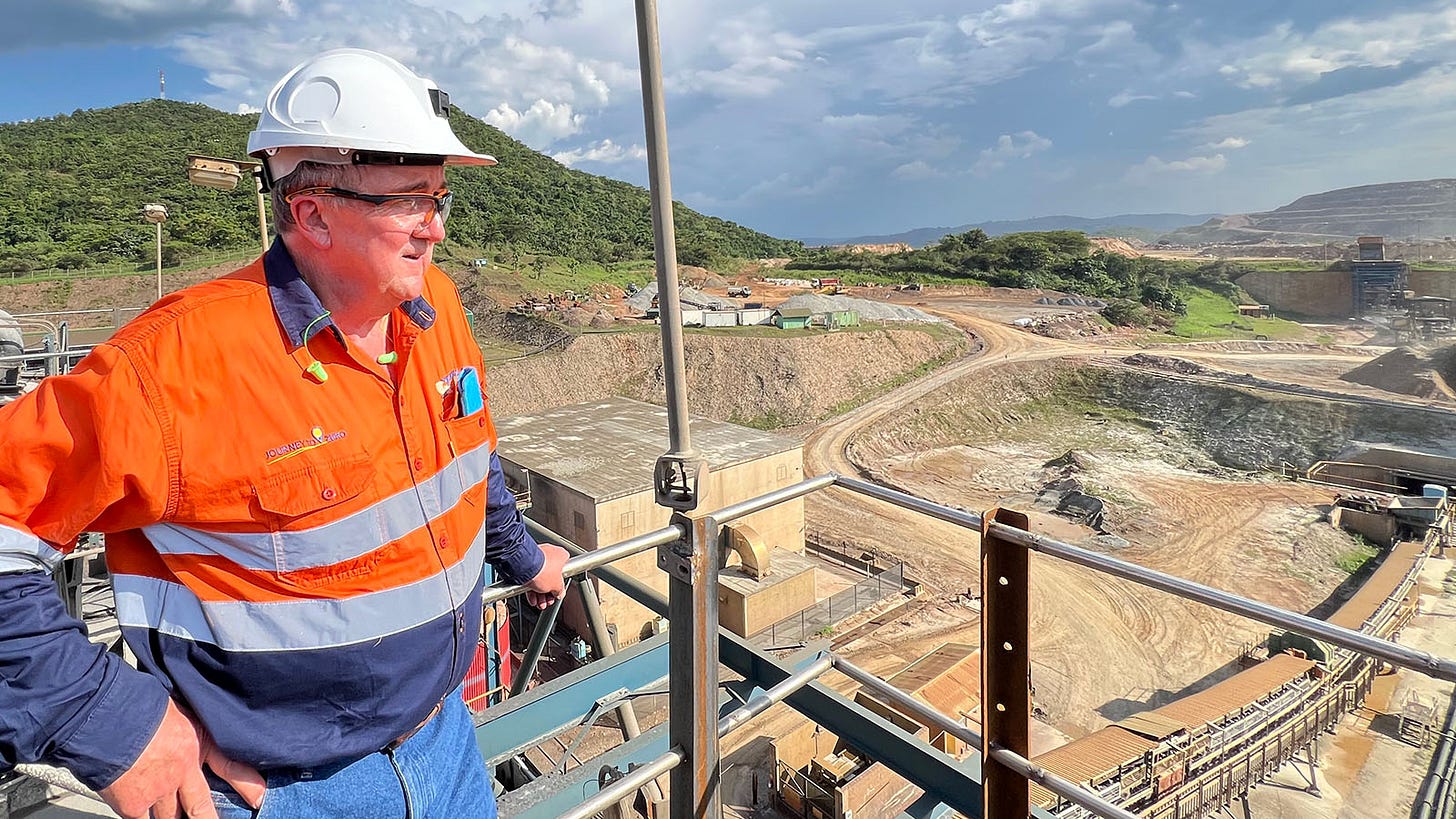No M&A ‘Shortcuts’ for Barrick, Says Bristow
Bristow unveils Q1 results and talks costs, M&A, Mali and succession
The newly renamed Barrick Mining Corporation (TSX:ABX) has reported its March quarter results, with earnings rising and gold production at the top end of guidance.
Gold production was 758,000 ounces, beating the top end of the guidance range of 700,000-750,000oz, but was down quarter-on-quarter due to planned maintenance.
Copper production was 44,000 tonnes, up year-on-year.
Gold all-in sustaining costs were US$1775 an ounce, up from US$1451/oz in the previous quarter due to lower production, while copper AISC was flat at US$3.06 per pound.
The 40% year-on-year increase in the average realised gold price to US$2898/oz resulted in a 59% increase in net earnings per share to US27c and an 84% jump in adjusted net earnings per share to US35c.
Attributable EBITDA was up 50% year-on-year to US$1.36 billion, with operating cashflow up 59% to US$1.2 billion and free cashflow of US$375 million.
Net debt was down 5% over the quarter to US$623 million.
“I'm pleased to show you another positive set of results with all the arrows once again pointing in the right direction,” Barrick CEO Mark Bristow told analysts.
“And we continue to forecast improvements throughout the year.”
When asked why Barrick’s costs were higher than Agnico Eagle Mines’ (TSX: AEM), Bristow pointed to Agnico benefitting from the depreciation of the Canadian and Australian dollar versus the US dollar.
Bristow said Barrick’s sustaining costs were running about US$150/oz above normal due to issues being fixed in Nevada, Papua New Guinea and Tanzania.
He said costs would trend lower throughout the year.
Barrick declared a quarterly dividend of US10c per share. It repurchased US$143 million of its shares during the quarter.
Barrick has dropped the ‘gold’ from its name and is now known as Barrick Mining Corporation. Its ticker on the New York Stock Exchange will change from GOLD to B.
“It's a symbolic but important shift that reflects our strategic focus on a portfolio of long-life gold assets supported by a growing copper business,” Bristow said.
M&A
Deal flow has ramped up in the gold sector, but Bristow referred to other companies pursuing “shortcuts through M&A”.
“We are proud that Barrick continues to lead the industry in replacing and growing reserves through the drill bit, and not through overpriced M&A,” he said.
“Since the [Randgold] merger, we've added 111 million gold equivalent ounces of reserves at a cost of just US$10 per gold equivalent ounce compared to M&A deals in the sector averaging over US$440 per ounce and in some cases more than double that.”
Barrick is more likely to be a seller in this market, as evidenced by the recent US$1 billion sale of its 50% stake in the Donlin project in Canada.
Bristow described the divestment as the first step in rationalising the portfolio to focus on tier one assets.
“In line with that, we have also launched a process to test the market for Hemlo,” he said.
A divestment process for the Tongon mine is also underway.
Growth
The Reko Diq project in Pakistan and Lumwana expansion in Zambia formally transitioned to the execution phase during the quarter.
“These projects will materially grow Barrick’s copper and gold production and support our goal to organically grow our gold-equivalent ounces by 30% by the end of the decade,” Bristow said.
The company completed the Pueblo Viejo throughput improvement projects and transitioned Fourmile to a prefeasibility study.
Barrick has 16 drill rigs active at Fourmile and is drilling projects in the Americas, Africa and Asia, including at a new discovery at Reko Diq.
Bristow said the proposed divestment of Hemlo in Canada had no bearing on Barrick’s commitment to grow there and the company had launched a major drilling program in the Southern Abitibi.
“Canada remains a core destination for us. And we are fully committed to growing our presence here,” he said.
“As you can imagine, it's a highly competitive environment, especially with the recent uplift in gold prices, but we're focused on building a high-quality portfolio of targets that can support long-term value.”
Mali
Barrick’s Loulo-Gounkoto operation in Mali has been suspended since January due to a dispute with the Malian government.
The mine is not on full care and maintenance and Barrick continues to pay all of its Malian workforce, leading to holding costs of US$15 million a month.
Bristow said there was no plan to move to full care and maintenance unless the company was “forced” to.
Bristow said the company was continuing negotiations with the government.
“This has been a cornerstone asset for the country, and we are committed to finding a constructive way forward,” he said.
Succession
The Financial Times reported on Wednesday that Barrick had kicked off a formal succession process.
Bristow dismissed the story as a beat-up and said it was something the board always discussed.
“Big succession plans need real consideration,” he said.
“Our succession works on a 12-month rolling program. It’s deep into the organisation and as an executive group, we’ve got to know the top 300 potential high-flyers in our organisation across all three regions.”
Bristow has committed to stay on until at least 2028 but said “three years is not a long time, not in an organisation like Barrick”.


